Epson PowerLite EB-775F Handleiding
Bekijk gratis de handleiding van Epson PowerLite EB-775F (4 pagina’s), behorend tot de categorie Beamer. Deze gids werd als nuttig beoordeeld door 50 mensen en kreeg gemiddeld 5.0 sterren uit 25.5 reviews. Heb je een vraag over Epson PowerLite EB-775F of wil je andere gebruikers van dit product iets vragen? Stel een vraag
Pagina 1/4

Quick Setup
IMPORTANT: Before using the projector, make sure you read these instructions
and the safety instructions in the online User’s Guide.
Note: Product availability varies by country and region.
Note: The illustrations show the EB-760W, but the steps are the same for all
models, unless otherwise specified.
Connect the projector
Computer
Choose from the following connections. See the sections below or the online
User’s Guide for details.
VGA cable
USB cable
HDMI cable
HDMI® port
Connect one end of an HDMI cable to one of the projector’s ports and HDMI
the other end to an HDMI port on your computer.
Computer port
Connect one end of a VGA cable to one of the projector’s ports, and Computer
the other end to your computer’s monitor port. If you are using a laptop,
switch it to external display (see “Troubleshooting”). You can also connect an
audio cable.
Note: To use the projector’s Computer2 port, change the Monitor Out Port
setting in the Signal I/O menu. See the online User’s Guide for details.
USB port
Connect the square end of a USB cable to the projector’s (square) port. USB-B
Connect the flat end of the cable to any USB port on your computer.
Windows® 7 or later: After turning on the projector, follow the on-screen
instructions to install the Epson® USB Display software (EMP_UDSE.EXE;
only on first connection). If the software screen does not display
automatically, open , or , then double-click My Computer, Computer This PC
EPSON_PJ_UD.
OS X 10.8.x or higher: After turning on the projector, the setup folder for
USB Display appears in the Finder. Double-click and USB Display Installer
follow the on-screen instructions to install the Epson USB Display software
(only on first connection). If the software screen does not display automatically,
double-click .EPSON_PJ_UD, then double-click USB Display Installer
External monitor and speakers
You can connect an external monitor and external speakers to your projector to
enhance your presentations. See the online User’s Guide for details.
Wired network
Connect the projector to your network using an Ethernet cable. See “Wired
network configuration” for more information.
Ethernet cable
Video device
Connect multiple video devices and use the Source Search button on the
projector or remote control to switch between them. For more information on
playing sound through the projector, see the online User’s Guide.
Component video
to VGA cable
3.5 mm
audio cable
RCA video cable
(composite video)
HDMI cable
Note: If you connected a streaming device to an HDMI port, you can also
connect it to the projector’s (flat) port for power.USB-A
Camera, USB device, or document camera
Connect a digital camera, USB flash drive, USB storage device, or Epson DC-07
document camera to the projector’s (flat) port.USB-A
USB cable
If you connect a digital camera, USB flash drive, or USB storage device, you can
use the projector’s PC Free feature. You can also connect other Epson document
cameras to the projector. See the online User’s Guide for details.
Using the remote control
Install the two AA batteries as shown.
Choose which source
to display
Turn projector on
and off
Access projector menus
Turn off projector
display and sound Access the Home
screen
Navigate projector
menus
Control projector
volume
For more information on using the remote control, see the online User’s Guide.
EB-760W/EB-770F/EB-775F

Turn on your equipment
1 Turn on your computer or video source.
2 Make sure the power cord is connected and plugged into an
electrical outlet.
3 Press the power button on the projector or remote control. The
projector beeps, and the Status light flashes blue and then stays on.
Note: To shut down the projector, press the power button twice.
4 If you don’t see an image, press the Source Search button on the
remote control to select the image source.
Note: If you still see a blank screen or have other display problems, see
the troubleshooting tips on the back of this sheet.
5 If you need to focus the image, first slide the switch on the side of the
projector to open the air filter cover. Then raise or lower the focus lever
to sharpen the image.
6 Use the arrow buttons on the remote control to highlight any of the
options on the Home screen, then press to select it.
7 The default language of the menu system is . To select another English
language, press the button on the remote control. Select Menu
Management Language and press . Select and press . Select your
language and press . Press the button to exit the menu system.Menu
Network your projector
Wireless network configuration
Follow these steps to set up the projector for a wireless network connection.
1 Press the Menu button on the remote control.
2 Select the Management menu and press .
3 Select On as the setting.Wireless LAN Power
4 Select the Network menu and press .
5 Select Network Settings and press .
6 Select Wireless LAN as the Priority Control Interface setting.
7 Select one of the following as the setting:Simple AP
• On for a direct connection to a computer, tablet, or smartphone.
• Off to connect your projector to a router or access point.
Note: If you connect to the projector directly, you can only project
locally-stored content.
8 Select any other wireless settings as necessary. See the online User’s Guide
for details.
9 When you are finished, return to the Network Settings menu and select
Set to apply your settings. Then select Yes to save the settings.
10 Press the Menu button to exit the menu system.
Wired network configuration
Follow these steps to set up your projector for a wired network connection.
1 Press the Menu button on the remote control, select the menu, Network
then press .
2 Choose Network Settings and press .
3 Select Wired LAN as the Priority Control Interface setting.
4 Select the Wired LAN menu and press .
5 Choose IP Settings and press .
6 If your network assigns addresses automatically, make sure the DHCP
setting is on. If not, make sure DHCP is off and enter the projector’s
IP Address Subnet Mask Gateway Address, , and , as needed. Then
press .Esc
7 To prevent the IP address from appearing on the network standby screen,
set the setting to IP Address Display Off.
8 When you are finished, return to the Network Settings menu and select
Set to apply your settings. Then select Yes to save the settings.
9 Press the Menu button to exit the menu system.
Install the optional
software
You can use Epson iProjection™ software to display wirelessly from a computer
to your networked projector. Download the software and operation guide from
your product’s support page (see “Where to get help”) and install the program
on each computer that will project over the network.
To monitor and control your projector over the network, download and
install the Epson Projector Management software (Windows only) and
operation guide from your product’s support page (see “Where to get help”).
Project over a network
If you need to configure the projector for a wired network, see “Wired network
configuration.”
1 Press the LAN button on the remote control. You see a screen like this:

2
Start Epson iProjection on your computer.
Windows 11: Select > > > All Apps EPSON Projector Epson
iProjection Ver.X.XX.
Windows 10: Select > > EPSON Projector Epson iProjection
Ver.X.XX.
Windows 8.x: Navigate to the Apps Epson screen and select
iProjection Ver. X.XX.
Windows 7: Select or > or Start Programs All Programs > EPSON
Projector > Epson iProjection Epson iProjection Ver X.XX > .
macOS 10.13.x or higher: Epson iProjection Double-click the icon in
the Applications folder.
3 Select Advanced Connection Mode and click OK.
4 Select the projector you want to connect to, then click Join.
If you don’t see the projector you want, click the Automatic search
button to find the projector automatically, click the Manual search
button to enter the projector’s IP address, or click the button Profile
to find the projector based on a previously saved profile.
5 If you see a message asking for a keyword, enter the four digits that
appear on the LAN standby screen and click OK.
Your computer image is projected, with a floating toolbar:
When you’re done presenting, click on the toolbar.Leave
Using the Epson iProjection
app
You can project wirelessly from a mobile device (iOS, Android™, or
Chromebook™) using the Epson iProjection app and a QR code.
1 Scan the following QR code to download and install the Epson
iProjection app.
2 If you connected the projector to a network wirelessly, make sure to
connect your mobile device to the same network.
3 Press the LAN button on the remote control to display a QR code on the
projector screen.
4 Start Epson iProjection on your mobile device.
5 Use the QR code reader feature to read the QR code displayed.
6 Follow the app instructions to connect your device to the projector.
For more information on setting up and using this app, visit
http://epson.com/projectorapp http://epson.ca/projectorapp (U.S.),
(Canada), or (Latin America).http://latin.epson.com/iprojection
Using web remote
You can use a standard web browser to control the projector through the
network. A virtual remote control on your computer screen lets you perform
many of the same functions as you can with the physical remote control.
1 Open your web browser and enter the IP address of the projector you
want to monitor in the browser’s address bar. The Epson Web Control
menu opens.
If you’re not sure what the IP address of the projector is, turn the
projector on and select or Wired LAN Info Wireless LAN Info from the
Network menu to display the IP address of the projector. (Do not enter
the leading zeroes.)
2 Select Basic Control or . If you see a login screen, enter Remote
EPSONWEB admin as the user name and as the password.
3 Use the on-screen buttons to operate the projector, as you would using
the remote control. See the online User’s Guide for details.
Turn off picture
and sound
Select equipment connected to
an HDMI port
Select wired or wireless network
signal
Select video signal
Select USB display signal
Pause video
Managing content
(EB-770F/EB-775F)
You can manage content from your computer using the Epson Projector
Content Manager software, or over the network using a web browser (Epson
Web Control) or the Epson iProjection app.
Using the Content Manager software
The Epson Projector Content Manager software allows you to add images and
movies to playlists and load them easily and directly to your projector via USB
for playback.
Note: Download and install the Epson Projector Content Manager software
from your product’s support page (see “Where to get help”). For more
information, see the online Epson Projector Content Manager Operation Guide
or the online User’s Guide.
Troubleshooting
• If you see a blank screen, check the following:
• Make sure your computer or video device is properly connected.
• Make sure the Status light on the projector is blue and not flashing.
• Press the power button or the button on the remote A/V Mute
control to wake the projector from standby or sleep mode, if
necessary.
• If you see a blank screen when a computer is connected, check the
following:
• On Windows, hold down the Windows key and press at the same P
time, then click Duplicate.
• If you are using a Mac laptop with macOS 13, select System Settings
> Displays. Press the + pop-up menu button, then choose a display to
mirror.
On macOS 12, select System Preferences > Displays Display >
Settings. Select the projector, then choose the mirror option for your
display from the drop-down menu.
On macOS 11 and older, open and select System Preferences
Displays Arrangement Mirror . Click the tab and select the
Displays checkbox.
Product specificaties
| Merk: | Epson |
| Categorie: | Beamer |
| Model: | PowerLite EB-775F |
Heb je hulp nodig?
Als je hulp nodig hebt met Epson PowerLite EB-775F stel dan hieronder een vraag en andere gebruikers zullen je antwoorden
Handleiding Beamer Epson
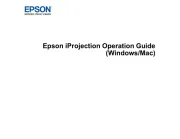
9 September 2025
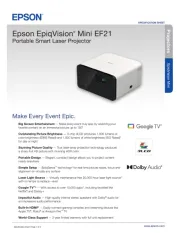
8 September 2025
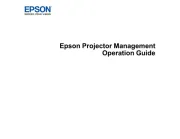
8 September 2025
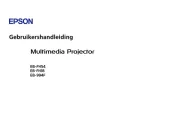
30 Augustus 2025
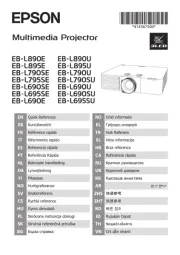
29 Augustus 2025
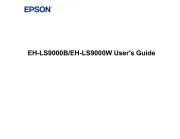
29 Augustus 2025

12 Augustus 2025

12 Augustus 2025

11 Augustus 2025

11 Augustus 2025
Handleiding Beamer
- Eiki
- Dell
- Pyle
- Auna
- Marantz
- Lenco
- Casio
- AFX
- Dream Vision
- Vivitek
- Celly
- Speaka
- Derksen
- Ignition
- Technaxx
Nieuwste handleidingen voor Beamer
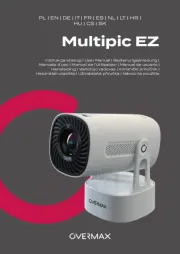
13 September 2025
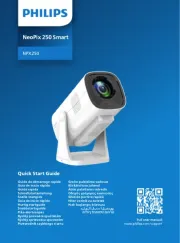
8 September 2025
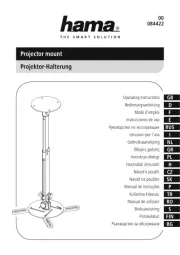
3 September 2025
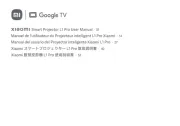
1 September 2025
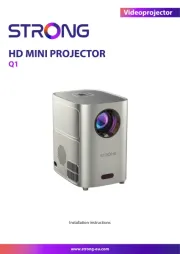
26 Augustus 2025

26 Augustus 2025
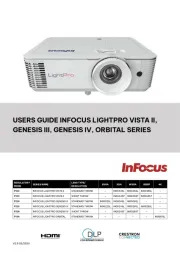
25 Augustus 2025
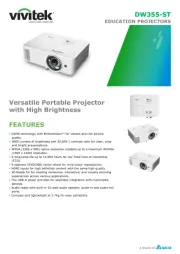
15 Augustus 2025
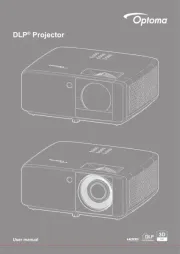
11 Augustus 2025
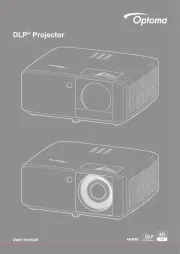
11 Augustus 2025